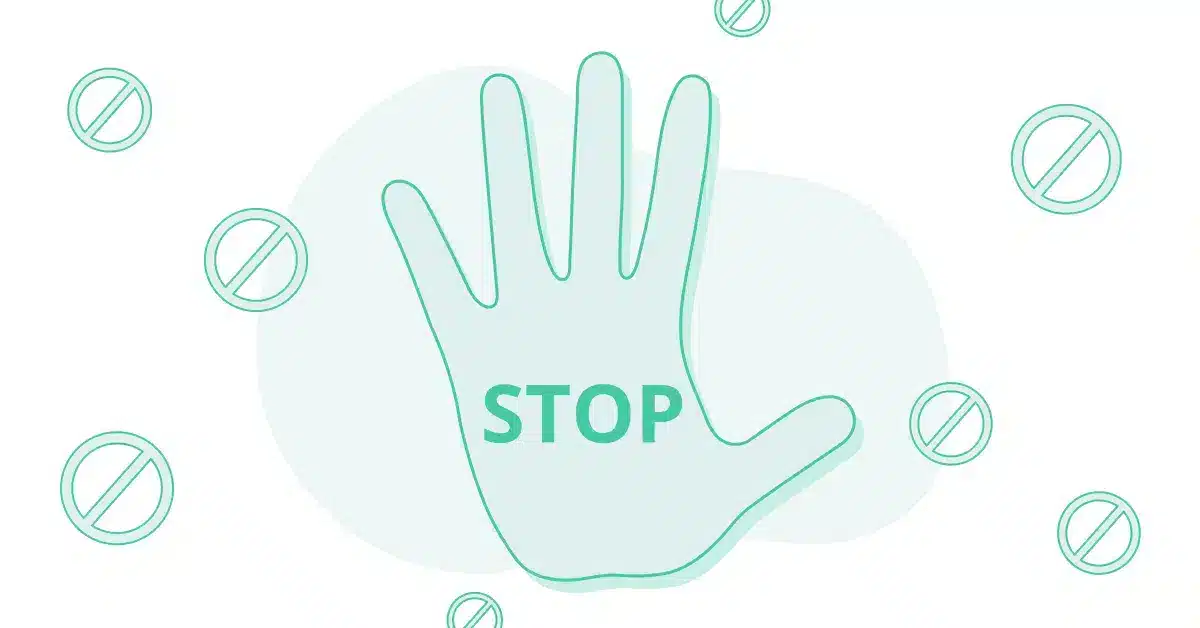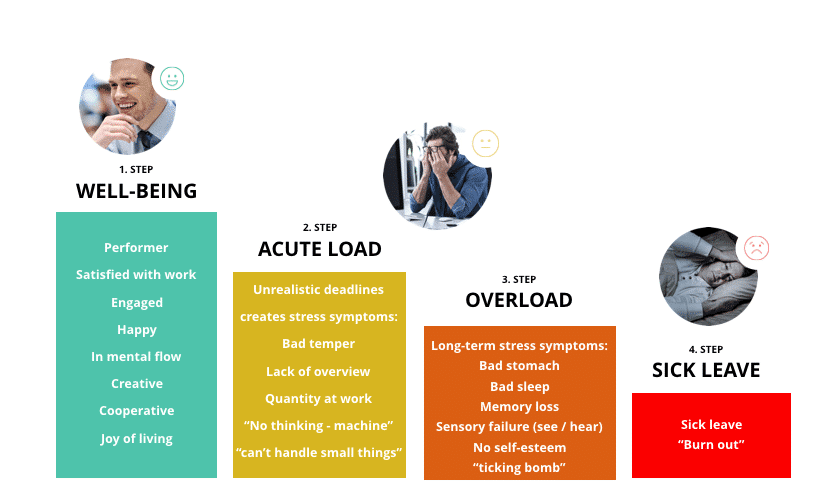You probably remember the wave.
The overwhelming wave that hit the whole world in 2017.
The MeToo wave.
Here the world became aware of how big a problem sexual abuse really is – and it soon became clear that most women have experienced some form of unwanted sexual attention at some point in their lives.
What is sexual harassment?
“… And a grown man can be terribly injured
Of pats on the butt and hands on the thigh
We do not engage in sexual harassment
We do not find ourselves in sexual harassment”
Maybe you have heard about the old SHU-BI-DUA song that blew up all the danish charts back in the 1990s.
Back then, sexual harassment was presented as ‘a pat on the rear’ or ‘a hand on the thigh’.
Today it covers a somewhat wider range of situations between people.
Sexual harassment is now defined as ‘any form of unwanted sexual attention’.
And it is quite subjective, in that we all have different and very individual limits.
The statistics show that 11-12% of young women report experiencing sexual harassment every year.
And these are primarily women between the ages of 18 and 34.
Sexual harassment can occur in many guises and in many different scenarios.
It can be between an employee and a customer/citizen.
It can be internal between employees.
And of course it can also occur between manager and employee.
If the scenario is internal to the workplace, then a distinction is made between four different situations:
– Sexual harassment as punishment for breaking norms
– Sexual harassment as group culture
– Sexual harassment after the breakup of a romantic relationship
– Interplay that is misunderstood
Sexual harassment as punishment on norms
An employee breaks the already established norms at a workplace. It can be in many different ways, for example:
– A woman is employed in a workplace where there are ONLY men
– A man is employed in a workplace where there are ONLY women
– An employee in a corporate office environment dyes his hair pink
The employee in question is exposed to abusive behavior in relation to the norms that the employee has broken. It can be sexual harassment, where the purpose of the behavior is humiliation, isolation or ostracism.
From here, it may happen that the person does not speak up, is not asked for help – and the problem is not dealt with. This may be due to a lack of knowledge, focus or skills. It can also stem from the fact that the person simply does not dare to defend themselves or say stop. The situation can be extremely uncomfortable and you can be in a form of shock.
When the problem is not dealt with, the employee will eventually develop symptoms of stress. And this can result in many types of stress. Stress symptoms such as lack of sleep, lack of energy, palpitations or outright anxiety.
If this continues and there is still no handling from either the employee or the organization’s management, then the employee will probably call in sick or resign.
And then the damage is done.
Sexual harassment as group culture
This form of harassment is characterized by arising from a group culture. How do we behave towards each other? It is suddenly a question that is defined by a learned culture rather than the organization’s chosen premises and framework.
The process itself may look like this:
– Colleagues witness someone in the workplace engaging in a destructive interaction pattern
– There is a further strengthening of offensive behavior as being normal and acceptable in the group
– Systematic performance of offensive acts of a sexual nature (social control, abuse of power, etc.)
– Witnesses’ assessment: Is the behavior OK? Is it normal? Is it risky to intervene? Is the group/work important to me?
– And exactly these considerations can result in the employee choosing to be passive – and perhaps even riding the wave, because it has somehow become acceptable behavior in the workplace
– Reaction: Is a passive witness or participates in harassment to strengthen one’s own position (may be associated with masculinity)
– And then the ball rolls. The spiral continues and more will be violated along the way
In this form of sexual abuse, it is extremely important that you deal with the problem – and first of all define the policy that characterizes your desired working environment.
– What is acceptable behavior for you?
– What should an employee do to deal with any violations?
Information from the 1st day of employment
And then make sure that all new employees are informed immediately at the start.
New employees are your most important card in dealing with this group culture.
They have not yet become familiar with the working environment and are thus not yet affected by the offending behaviour.
It has not been normalized with them yet.
And if they first come in with a clear definition of what is acceptable and what is not, they will, first of all, act accordingly – but they will also react to any offensive behavior from colleagues.
And it is an incredibly important step in the process towards a work culture where offensive behavior is unacceptable.
Sexual harassment after the breakup of a romantic relationship
Two colleagues have found each other – in a romantic way. They are madly in love and all is well.
But the relationship doesn’t last!
And one party does not agree with the breakup at all.
Now what?
The abandoned party may expose the other to sexual harassment via comments on social media, texts, phone calls, etc.)
The offended party speaks up and blocks the ex from Facebook – which only escalates the situation, as the abandoned party feels even more abandoned.
The situation is not handled at the workplace. For both parties act professionally in the workplace and continue the collaboration – and fail to tell both colleagues and management.
The tension and imbalance will invariably contribute to one party (or both) being so affected by the situation that it leads to illness, stress or termination.
Interplay that is misunderstood
Misunderstandings can easily end up in sexual harassment.
For example, a situation like this can arise:
Two younger colleagues are flirting with each other – and it’s OK for both parties. No limits are exceeded. Both think it’s fun and cozy.
But… The flirtation is witnessed by an older colleague – and this perceives the situation as a ticket to flirt with one party.
The older colleague seeks out the younger one and begins the flirtation. Without having any intention of overstepping boundaries with offensive actions.
But the younger colleague does not like the flirting – and it is quickly perceived as unwanted, sexual attention and leads to an unpleasant feeling of violation.
The younger colleague might choose one of the following reactions:
- Don’t dare speak up -> Experienced sexual harassment that only intensifies
- Complain to boss/colleagues -> Risk of conflict or bullying
Regardless of which of the two options is chosen, it is difficult to see how it can end happily for the offended party.
At the same time, it is also worth noting that the ‘violator’ in no way had the intention to violate – but simply misunderstood the other party’s boundaries, because his boundaries were different to the younger colleague.
So yes, it IS complex.
And there can be many losers in such situations.
Have you witnessed sexual harassment? – then you also have a responsibility
Regardless of the situation in the workplace in question, it is extremely important that you, as a witness to harassment, act on it.
Still, there are an incredible number of people who take on the role of passive witness. And they do it because:
– They are afraid that it will affect themselves if they intervene
– They think that the person who is being violated is up to it
– They have a close relationship with the offender
– Sexual harassment is normalized in a group
– Violating gives status in a group
And that is completely natural.
Unfortunately.
Because how many situations and conflicts could be averted with the right immediate intervention from colleagues around.
One can assume different roles as a witness to abusive acts.
There are 6 different types:
The ball molder
The broker
The assistant
The passive
The sympathizer
The defender
Source: www.etsundtarbejdsliv.dk
Are you a ball molder?
That is, the person who initiates an offensive situation – either by doing so directly or by indirectly creating a situation where others are initiated to be active in an offensive situation.
Or maybe a broker?
The mediator immediately helps to find a solution by, for example, actively intervening in the situation or by talking to the parties either together or separately.
The assistant
The assistant actively lends a hand in the offending situation. Either by laughing along or very actively showing sympathy towards the offender.
The passive
Yes, as the title suggests, you can also be the passive witness. And this is where you choose to walk away from the situation, silently watch or simply ignore the offending actions, even though you have every opportunity to intervene.
The sympathizer, perhaps?
Are you the one who gets the offended person on both hands and gives a hug? The sympathizer feels deeply for the offended party and uses resources to comfort. But do it only afterwards. You do not want to interfere in the situation itself, but are not afraid to show your care and sympathy to the ‘victim’ afterwards.
The defender
If you are the defender type, then you will immediately act in the situation. You will intervene and protect the offended party. You are not afraid to defend yourself in public – in front of all your colleagues. In fact, you take a bit of pride in doing just that.
There can be many reasons why you take on your specific role as a witness. It can be your own history, thought patterns, self-confidence etc.
However, it would be to the advantage of everyone in the work environment in question if colleagues around take an active role in order to stop the behaviour.
And therefore it is also an incredibly important part of the well-being work that the organization draws up a clear policy, which states that it is permissible to intervene – and that offensive behavior is not acceptable.
The clearer it is for the employees – the easier it will be for them to assume the roles of being active and intervening, should an abusive situation arise.
And the measurements show…
That is why it is so indescribably important that you act proactively and prevent a working environment that is characterized by being offensive.
As soon as such behavior is normalized, there is a long and tough task of well-being ahead.
Investigate the cases with a Health and Risk assessment, well-being measurement or a pulse survey. In this way, you gain concrete knowledge about the underlying (and hidden) problems that may exist in the working environment.
When you have your measurements ready, you know the specific problems and then it’s just up to you and get action plans and action plans drawn up that deal with the problems.
Prevent, prevent, prevent…
Prevent offensive actions with a clear policy on what is allowed and how you want employees to behave and treat each other.
The most important step here is to clarify the company’s values and culture – and as the first step pass these on to new employees.
As previously mentioned, new employees are the strongest card in relation to changing the work culture from within. If they come in with a deep understanding of where the various boundaries are with you, then there is minimal risk that they will be affected by an already unsuitable environment.
This does not mean that employees who have been with the company for a long time should not be worked with.
Here you use the results from the measurements to localize the problems – and from there draw up action plans which ensure that everyone becomes aware of how you would like employees to treat each other.
You should encourage dialogue.
Dialogue is the absolute strongest card in relation to subjective issues.
Dress employees up to dare to speak up and be open about where their limits lie.
Use dialogue to increase awareness among employees and managers – and to increase psychological security in the workplace.
Make sure to increase the skills of both managers and employees to intervene and constructively handle any complaints about harassment – and in the same way, focus on what role you have as a witness – and how important it is that you choose a active and intervening role.
Also prevent by recruiting managers and employees – who demonstrate ethical responsibility and behavior at a very early stage in the hiring process. It may seem banal, but it is often the first impression that prevails.
10 advice from BFA
1. Make it clear that sexual harassment is unacceptable
An important first step is to put sexual harassment on the agenda. It is important that the management clearly shows that sexual harassment is unacceptable.
Create clear frameworks for behavior (what is not ok and what is) and announce them so that everyone in the workplace knows them.
This ensures that the employees know their options and know that they have management’s support to use them if they experience sexual harassment.
2. Have clear guidelines
It is important that you know what to do to prevent and deal with sexual harassment. It is therefore necessary to have clear guidelines on:
– How you identify sexual harassment
– How you prevent sexual harassment
– How you will deal with the problem if it arises
– What help is offered to those who have been exposed
– Consequences for the perpetrator of sexual harassment
Make sure everyone in the workplace knows what to do.
When you have discussed and decided on which guidelines can work in your workplace, it is a good idea to write them down.
Make sure everyone knows the guidelines and include them in the training and instruction you give to new hires.
3. Use the dialogue as a tool
Sexual harassment is taboo and can be difficult to talk about.
Therefore, it is a good idea to start from everyday life and talk about what is proper behavior and a good tone of communication with you, and where your boundaries are.
In this way, you can get a common understanding of when sexual harassment is involved in your workplace.
Remember that the workplace’s culture and values are a shared responsibility and are created in interaction between management and employees.
4. Say no!
It is important that you are aware of each other’s boundaries. Everyone has different boundaries and it is important to remember when you are talking about sexual harassment.
Talk about how you can speak up when your own boundaries are exceeded, or you experience that a colleague is overstepping their boundaries.
Together you can prevent sexual harassment by making it easier to speak up.
5. Clarify roles and responsibilities
Discuss and decide who has which roles and tasks. This applies both when you have to prevent and when you have to deal with sexual harassment.
Find out if you have the necessary skills in the workplace to work to prevent sexual harassment and to handle if a colleague or employee is exposed to sexual harassment.
Preventing and dealing with sexual harassment is a shared responsibility in the workplace.
6. Maintain focus on sexual harassment prevention
An important first step is to put sexual harassment on the agenda.
It is important that the management clearly shows that sexual harassment is unacceptable.
Create clear frameworks for behavior (what is not ok and what is) and announce them so that everyone in the workplace knows them. This ensures that the employees know their options and know that they have management’s support to use them if they experience sexual harassment.
7. Give instruction
The instruction of employees is an important part of the prevention and handling of sexual harassment. It must therefore be part of the instruction of the employees, who receive relevant information about the citizens/inmates/customers they deal with, including in which situations there is a risk of sexual harassment, as well as how they handle this.
This can include information about current guidelines.
It is important that all employee groups are continuously followed up.
Have a special focus on instructing new employees, young people, temporary workers and students!
8. Use the organization of your work as a tool
The organization of your work can help prevent you from being exposed to sexual harassment from citizens, inmates, customers etc.
For example, in some cases it may be necessary that you always have two employees present, or that the physical layout means that you have the opportunity to leave the room quickly.
Be aware of whether there are situations or times when you are particularly vulnerable. Take your work tasks as a starting point and how you can best solve them, so that you simultaneously prevent sexual harassment.
9. Focus on professionalism and sparring
Sexual harassment from citizens, inmates, customers etc. is a common professional challenge.
Therefore, talk about how you can use each other and your expertise to prevent sexual harassment.
Consider whether you have the right skills and how you can continuously strengthen your professionalism so that it can be used as part of the prevention of sexual harassment. It is important that you are prepared for the task and get the support you need.
Consider how you, management and colleagues, can use systematic sparring and supervision to learn from each other’s challenges and experiences.
Pay particular attention to involving employees who work a lot alone.
10. Learn from episodes
If you have experienced episodes of sexual harassment, talk about your experiences and how you handled certain situations.
Discuss how you can best use experience in planning the work, so that you avoid similar situations.
As part of the planning, it may be a good idea if you systematically register each episode of sexual harassment, assess whether it should be reported as an occupational injury and whether it should be reported to the police.
In this way, you get an overview of where, when and in which situations the episodes take place, and thus – how they can be prevented.
Source: www.bfa.dk









